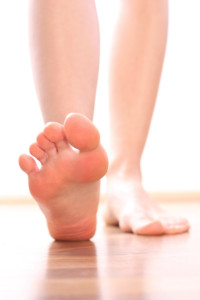Hyperhidrosis is a condition where overactive sweat glands cause an individual to sweat excessively in certain areas of the body, including the feet. If your child’s feet sweat profusely—even if your child is not hot or doing something strenuous—or their feet regularly emit an unpleasant odor, they may have hyperhidrosis. This condition can be quite uncomfortable, embarrassing, disruptive to normal activities, and may even make them more prone to developing a fungal infection due to continuously wet skin. Hyperhidrosis can be caused by physical stress or anxiety, certain medications, infections, fever, or even an underlying medical condition. You may be able to help your child manage the symptoms of hyperhidrosis by having them keep their feet clean, applying cornstarch or powder, choosing breathable materials in shoes, and wearing cotton socks that are switched out regularly. If these practices do not offer adequate relief, a podiatrist may be able treat your child’s hyperhidrosis with various procedures and medicinal therapies.
The health of a child’s feet is vital to their overall well-being. If you have any questions regarding foot health, contact Cary Golub, DPM of New York. Our doctor can provide the care you need to keep you pain-free and on your feet.
Tips for Keeping Children's Feet Healthy
- Make sure their shoes fit properly
- Look for any signs of in-toeing or out-toeing
- Check to see if they have Clubfoot (condition that affects your child’s foot and ankle, twisting the heel and toes inward) which is one of the most common nonmajor birth defects.
- Lightly cover your baby’s feet (Tight covers may keep your baby from moving their feet freely, and could prevent normal development)
- Allow your toddler to go shoeless (Shoes can be restricting for a young child’s foot)
- Cut toenails straight across to avoid ingrown toenails
- Keep your child’s foot clean and dry
- Cover cuts and scrapes. Wash any scratches with soap and water and cover them with a bandage until they’ve healed.
If you have any questions, please feel free to contact our offices located in Williston Park, and Long Beach, NY . We offer the newest diagnostic and treatment technologies for all your foot care needs.





